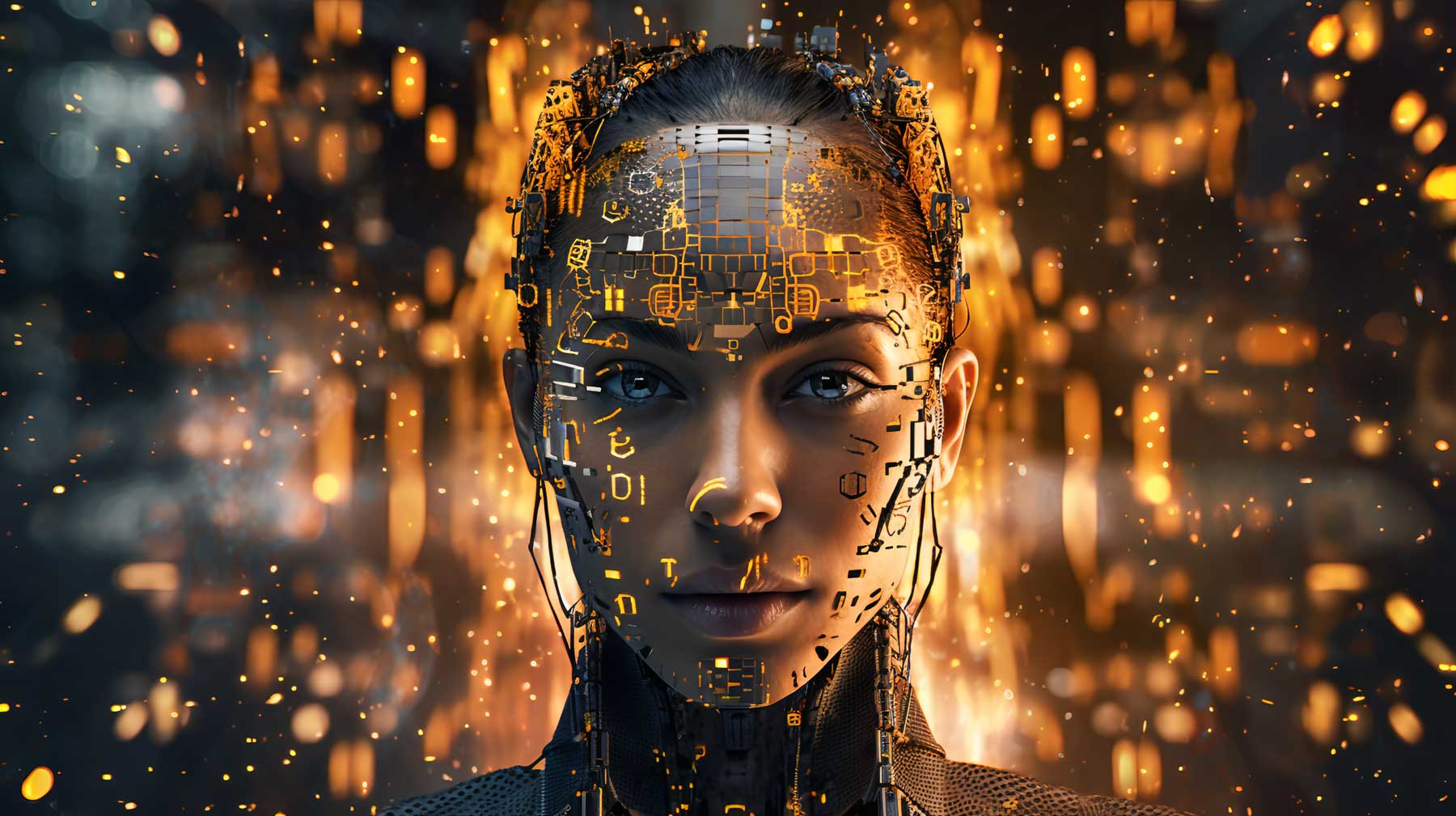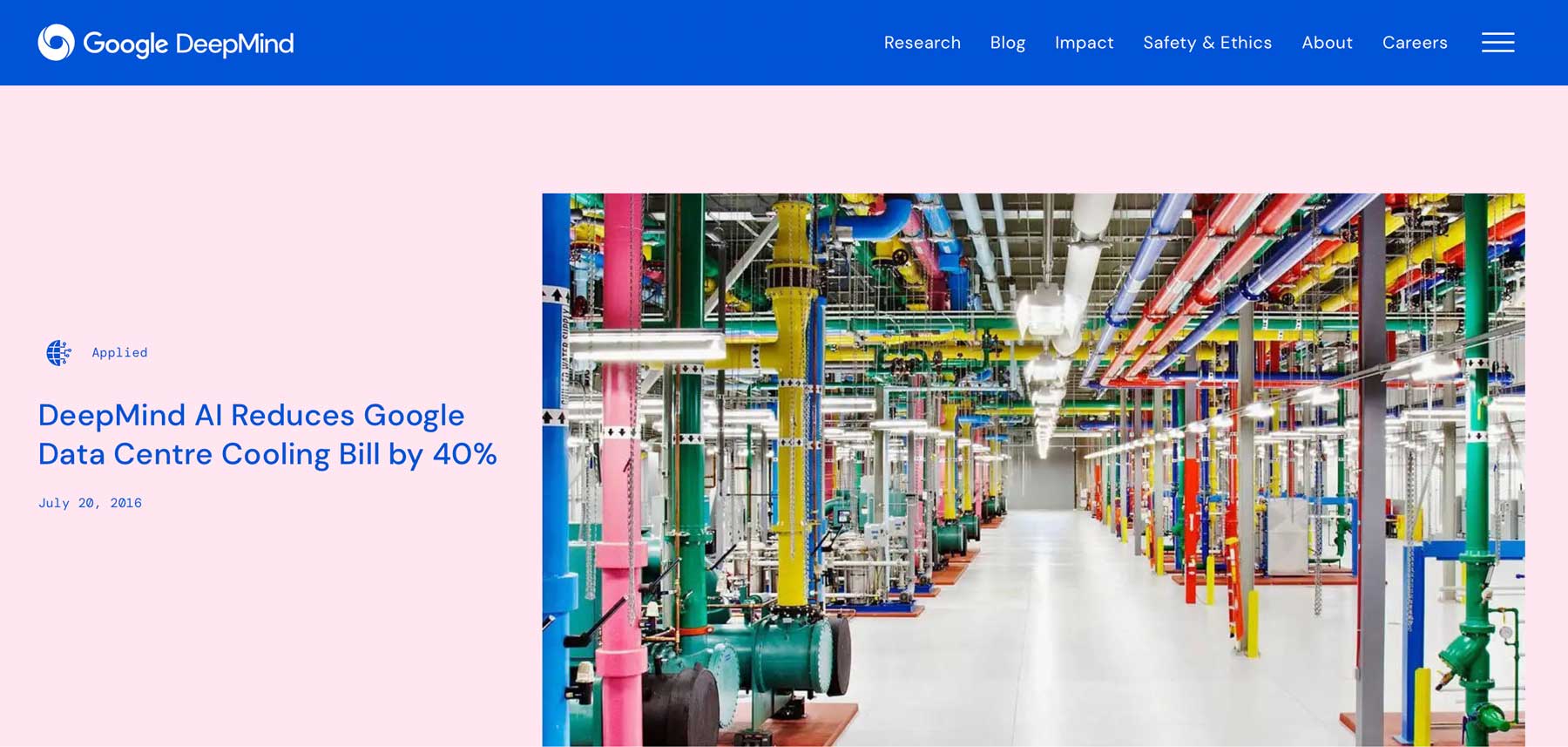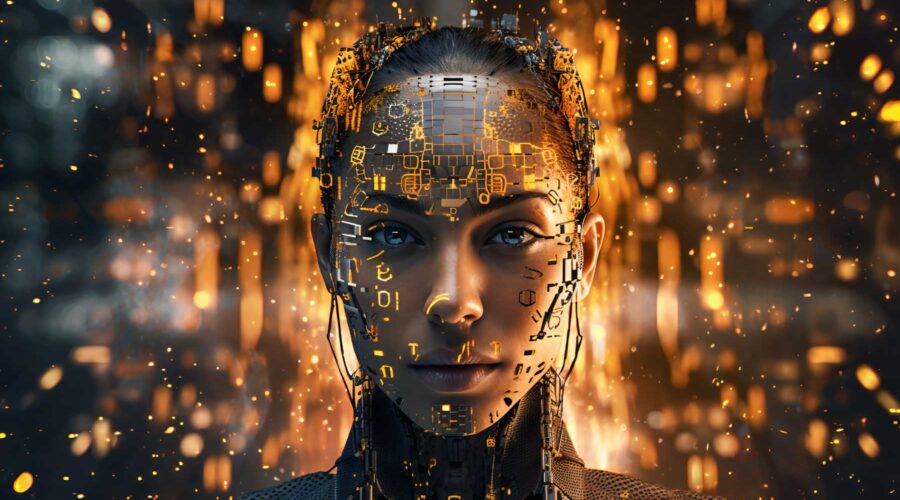Artificial intelligence (AI) has become a hot-button topic in recent months because of its potential to revolutionize how we live and work. Because of this, there is much to learn about it. In this post, we’ll explore the basics of artificial intelligence, including the different types of AI, how it works, and the applications you can use if you’re a creative type. We will also discuss the future of AI and how to use it responsibly.
Let’s dive in.
What is AI?

Image created with Midjourney
Artificial intelligence encompasses a range of technologies that empower computers to perform advanced tasks, such as visual perception, language comprehension and translation, data analysis, question answering, artistic creation, video generation, and much more. Serving as the backbone of modern computing, AI showcases astonishing capabilities. For instance, it can effortlessly transform a text prompt into a high-quality image (like the images in this post), simplify the removal of backgrounds from photos, facilitate autonomous driving in vehicles, and even engage customers through AI-powered chatbots.
The origins of AI trace back to 1955 when John McCarthy, an assistant professor of mathematics at Dartmouth, introduced this groundbreaking field of study. McCarthy envisioned AI as a means to “utilize language, develop abstractions and concepts, tackle problems typically reserved for humans, and enhance its own performance.” Despite the broad scope of AI, its fundamental objective remains consistent: constructing computer programs capable of problem-solving and goal achievement on par with human capabilities.
Subscribe To Our Youtube Channel
Types of AI
To truly understand what AI is, you need to understand the types of AI available. There are three main types: narrow or weak AI, general or strong AI, and super AI. Let’s explore each one so you can wrap your brain around each type.
Narrow or Weak Artificial Intelligence

Image created with Midjourney
With this type of AI, the computer doesn’t possess full cognitive abilities; its intelligence is based on training for that specific task. Examples of narrow AI include image recognition systems, speech recognition systems, and AI chatbots. For instance, digital voice assistants like Siri and Alexa, search engines like Google or Bing, and autonomous vehicles like Telsa all use narrow or weak AI to function. In fact, all modern AI tools, AI art generators and AI chatbots, are all examples of weak AI.
General or Strong Artificial Intelligence

Image created with Midjourney
The next type of AI, general or strong AI, is also known as artificial general intelligence (AGI). These systems are not limited to a specific area of expertise and can perform various tasks beyond those of weak AI programs. While we have yet to achieve this level of technology, researchers aim to create intelligence equal to humans. The goal of strong AI is to one day have a machine that has self-aware consciousness, can discern needs and emotions, and can solve any number of problems, learn, and plan for the future. So far, the only examples of general AI are present in movies, with characters such as R2-D2 or Hal in 2001: A Space Odyssey.
Super Artificial Intelligence

Image created with Midjourney
Artificial superintelligence (ASI) is a type of AI that allows machines to exceed human capabilities. These systems would be able to do things such as predict the future, create new scientific methods, and more. With ASI, scientists could solve some of our largest problems, such as curing cancer, ending world hunger, or balancing the federal budget. While these seem out of the realm of possibility, scientists hope to use AI to improve our world. That said, this type of artificial intelligence is a double-edged sword. On the one hand, we could use this technology to enhance our way of life. On the other hand, it could end life as we know it.
How Does Artificial Intelligence Work?

Image created with Midjourney
AI works by processing large amounts of data and using algorithms, a set of rules, to recognize keywords to identify the type of help you’re looking for. It is programmed to think, act, and respond like a human. It encompasses three types of machine learning: supervised, unsupervised, and reinforcement, to develop these algorithms to offer solutions, answer questions, make predictions, or offer suggestions.
Every time an artificial intelligence system processes data, it tests and measures its performance, then learns from it. Unlike humans, machines don’t need breaks, so they can run millions of tasks quickly, learning as they go. It is important to understand that AI is not merely a solitary computer program or application but a field of study.
What is Machine Learning?

Machine learning is a type of AI that focuses on developing algorithms to learn from data. It enables computers to learn or train themselves from large amounts of existing data. For example, OpenAI’s ChatGPT uses several data sets containing over 570GB of text data from the internet, including books, articles, websites, and even social media. This enables ChatGPT to be one of the leading generative AI programs available, with many uses.
There are three main types of machine learning: supervised learning, unsupervised learning, and reinforcement learning.
Supervised Learning
Supervised learning allows computers to learn from labeled examples, meaning the input data already has known outputs. For example, a computer can be trained to recognize cats in pictures by showing many images of labeled cats. The computer can then use this training to accurately identify cats in new photos. You may already be familiar with this concept if you have an iPhone or Android device.
Let’s say you’ve taken photos of a family pet with your iPhone. When you click on the picture, iPhone recognizes the image of your pet and provides a link to the type of pet it thinks is shown in the photo.

Unsupervised Learning

Image created with Midjourney
Unlike supervised learning, unsupervised learning is self-organized and doesn’t require labeled data. Examples of unsupervised learning are clustering, which group data points together based on similarity, and dimensionality reduction, which finds the most important features of that data and reduces its size. Additionally, there’s anomaly detection, which is used to find data points that are unusual or out of the ordinary. Some examples of unsupervised learning in artificial intelligence are fraud detection in banking, cybersecurity, speech recognition, and marketing techniques such as customer segmentation.
Reinforcement Learning
This type of machine learning is the closest to human learning as machines can get. Machines can learn to follow instructions, conduct testing, operate equipment, and more through training. Reinforcement learning revolves around a digital program put into a specific learning environment. Like human learning, the digital agent faces a game-like situation and makes a series of decisions to try and achieve the right outcome. It learns by repeatedly failing, remembering to avoid repeating the same pattern. Correct answers are rewarded, while incorrect ones disperse punishment, teaching the software to avoid doing the wrong thing again. Some examples of reinforcement learning are robots that aid in the car manufacturing process, predictive text (think text messaging), healthcare diagnoses, and energy consumption.

For example, Google implemented reinforcement learning to control the energy expended through its data centers. With the help of DeepMind, Google has managed to reduce its data centers cooling bills by 40%.
What are Large Language Models?
A large language model (LLM) is a machine learning model that leverages deep learning techniques to process and comprehend language. It can process large amounts of data, learn intricate language patterns, and perform tasks such as answering questions, engaging in conversations, and tackling problem-solving scenarios. The most recognizable example of an LLM is ChatGPT, which, as previously mentioned, was trained on over 570GB of data.
Multiple layers of neural networks (similar to the human brain) comprise LLMs, which work together to analyze text and make predictions. They utilize left-to-right patterns to predict the likely association of words with one another. LLMs mirror a human’s ability to anticipate what might follow a word in a sentence.
How to Creatively Use AI
There are countless ways to use AI, including creatively. There are plenty of excellent AI tools to improve your productivity in several ways. These include AI writing tools, AI Art generators, and AI video generators. Let’s look at a few tools you can incorporate into your daily work schedule up your AI game.
AI Writing Tools: Jasper
Jasper is one of the best AI writing tools out there. It’s primarily used for generating SEO-quality copy. It has many features, including a natural language processor (NLP) that you can use to analyze and rewrite your content to make it more engaging. It’s also a great tool for correcting punctuation, improving your writing style, or generating new copy.
Pricing: Plans start at $29/mo, but Plagiarism Checker plans start at $59/mo for Boss Mode.
AI Art Generators: Midjourney

There is a lot of text-to-image software available right now, but few are better than Midjourney. Built on a Discord server, users can describe the image they wish to create using only a text prompt. You can use any number of descriptors to create pictures based on style, subject, and parameters to make the most realistic images imaginable. The interface takes time to learn, but even the greenest AI user can create gorgeous, lifelike pictures with Midjourney.
Pricing: Free, Paid plans start at $10 monthly.
AI Video Generators: Pictory
One of the best AI video generators out right now is Pictory. You can create short, branded, long-form, and everything in between with text-to-video generative AI. You can easily turn scripts, blog posts, or simple text descriptions into videos in just a few minutes. Plus, there are over three million images, stickers, and other design elements that you can use in the final product.
Pricing: Free, with premium monthly plans starting at $23.
How to Use Artificial Intelligence Responsibly
Even though AI has existed for several decades, the general public has remained largely unaware of it until recently. Whether you love or hate it, AI tools can dramatically boost productivity in our daily lives. That said, if we use it, we must use it ethically.
Here are a few tips to follow:
- Use it as an assistive tool: The most important thing to remember is to use it to help you, not do your job for you. It’s fine to use it to help with blog topics, generate outline ideas, create image assets, or for similar tasks. Never use it as a job replacement.
- Fact check everything: If you use generative AI, such as ChatGPT, Jasper, or Writesonic, be sure to always check the output for accuracy. People using it for a while can tell you that AI will sometimes lie to you. Take what it says with a grain of salt.
- Choose a reputable tool: With the emergence of so many artificial intelligence programs, it’s critically important to use a tool that is widely recognized. Be sure to thoroughly research any tool you use by reading reviews and examining their privacy and security practices.
The Future of AI

Image created with Midjourney
Whether we like it or not, the artificial intelligence revolution has arrived, and it’s up to each one of us to embrace it, learn from it, and utilize it responsibly. As this groundbreaking technology continues to evolve, we should anticipate some challenges along the way. While some fear it may result in job losses, others remain hopeful that new opportunities will arise to replace lost ones. Regardless, we owe it to ourselves to learn how to use it to increase productivity, make us more marketable as employees, and help responsibly usher in this new and exciting era.
Final Thoughts on Artificial Intelligence
If you’re still on the fence about AI, try testing a few applications to see what all the fuss is about. For writing, check out Jasper. They offer a 7-day free trial, so you can get a good feel for what it can do. Looking to create videos or images? Give Pictory and Midjourney a try. Pictory offers a free trial, but Midjourney doesn’t. However, once you see the results you can achieve with it, you will be fine paying $10 a month.
Do you want to learn more about AI? Check out a few of our how-to posts to help you get the most out of artificial intelligence.
- How to Use AI to Create Amazing Web Design with Divi (Using ChatGPT & MidJourney)
- How to Generate Beautiful AI Images with Stable Diffusion
- How to Use Midjourney to Create AI Art (Detailed Tutorial)
- What is ChatGPT & 10 Creative Ways To Use It
Frequently Asked Questions (FAQs)
What is AI in simple terms?
What are some recent examples of AI?
- Writing assistance (like Jasper AI writing tool)
- Art/Image generation (like Midjourney)
- Virtual assistance (like Siri or Alexa)
- Video generators (like Pictory)
- Chatbots (like ChatGPT or Chatsonic)
- Self-driving cars (like Tesla)
- Fraud detection (for financial transactions)
- Medical diagnosis (by analyzing images and data)
What are the 3 main types of AI?
- Narrow AI – This weaker level of AI is most common today, found in modern AI tools like Jasper or Midjourney.
- General AI – This stronger level of AI, also known as artificial general intelligence (AGI) would attain the same level of intellectual capabilities as a human (hypothetically).
- Super AI – also known as artificial superintelligence, is a hypothetical type of AI that would supersede the capabilities of a human.
Featured Image via Deezgrafix (me) / midjourney.com
The post What is AI? A Beginner’s Guide to Artificial Intelligence (2023) appeared first on Elegant Themes Blog.


